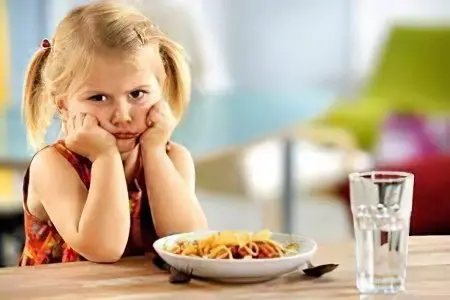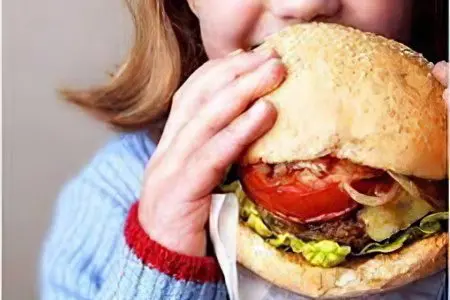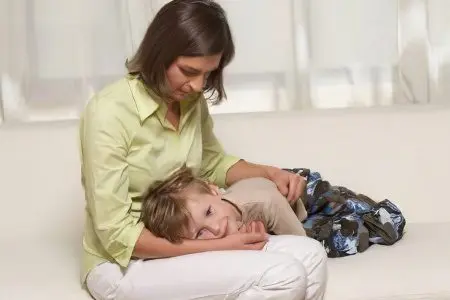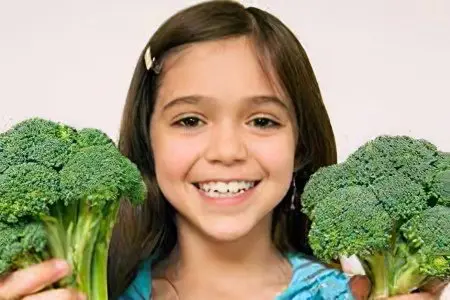Contents
Gastritis in children most often occurs at school age. The disease is a different type of inflammation of the gastric mucosa. This feature underlies the clinical manifestations of gastritis. But the most important factor that determines the symptoms of the disease is its specific type. Knowing these subtleties, it is possible to suspect by symptoms not only the presence of gastritis, but also determine its variety.
Symptoms of gastritis in children
Common symptoms of all types of gastritis:
Pain sensations. Most often, with gastritis, children complain of pain in the upper abdomen (in the area of the stomach). The intensity of the pain syndrome depends on the severity of the inflammatory process and the perception of pain by a particular child. Therefore, pain in the epigastric region can be both mild, non-intense, and excruciatingly strong;
Discomfort and heaviness in the stomach. It happens, as an isolated symptom, and is combined with pain, arising when it subsides or in the interictal period;
Heartburn. Children note its increase with torso bending and physical exertion. This symptom is manifested by a burning sensation in the region of the upper sections of the stomach and behind the sternum. Some children may notice a burning sensation spreading throughout the esophagus to the level of the pharynx. This creates a feeling of sourness in the mouth;
Belching of air or small amounts of food eaten. In this case, the child may develop bad breath;
Poor appetite and refusal of the child to eat;
Nausea and vomiting. Both of these symptoms can either accompany each other or occur in isolation;
Violation of the digestive processes. Inflammation in the stomach disrupts one of the first stages of food processing, which leads to a failure in all parts of the digestive process. Children develop bloating, loose stools or constipation, anemia, hypovitaminosis, and other symptoms of nutrient malabsorption;
Palpation pain in the epigastric region. Sometimes in children with thinned subcutaneous fatty tissue, a spasmodic stomach is determined in the form of a strand;
External changes. Indirectly, the presence of gastritis with impaired digestion can be indirectly judged by the pallor of the skin, the lining of the tongue with a grayish or whitish coating.

Features of manifestations of chronic atrophic gastritis:
Rarely occurs in children;
It is not pain that comes to the fore, but dyspeptic syndrome in the form of heaviness in the stomach, indigestion and absorption of nutrients;
Atrophic gastritis causes a violation of the general condition of the child, anemia and hypovitaminosis.
Symptoms of chronic hyperacid gastritis, in which there is excess gastric secretion, are:
Pain is the main symptom. It is provoked by eating or physical activity of the child;
Heartburn and belching sour;
The general condition of the child is rarely disturbed. Local pain and gastric disorders predominate.
Acute gastritis is characterized by the following symptoms:
Vomiting predominates. Sometimes she becomes indomitable;
Constant pain in the stomach;
Violation of the general condition of the child, lethargy with prolonged vomiting.
Causes of gastritis in children

The risk group for the development of gastritis among the child population are children who are in a period of active growth and transitional changes in the body. Therefore, gastritis mainly occurs in children of early school age (6-10 years), as well as in adolescents in adolescence (from 12-13 to 16-17 years). These age-related prerequisites for childhood gastritis create favorable conditions for the implementation of the negative effect of causative factors. These include:
Wrong nutrition. Refers to the most common cause of both acute and chronic gastritis. Improper nutrition refers to the child’s use of harmful fast food products (hamburgers, french fries, fried pies, etc.), chips, crackers, carbonated drinks (Coca-Cola, Sprite, any colored liquids), spicy and dishes with an excessive content of spices, smoked meats, excessively fatty foods;
Violation of the process and regularity of eating. If a child eats irregularly with large intervals between meals or portion sizes, this creates a high risk of developing gastritis;
Poor quality food. If a child eats, even healthy foods, but they are either spoiled or infected with pathogenic microorganisms, this will cause acute gastritis;
Mental and psycho-emotional overload. Today’s children are overburdened with school responsibilities. A child who does not have free time becomes very sensitive to any aggressive environmental factors. At the same time, the regulation of the synthesis of gastric juice is disturbed, appetite decreases, and as a result, the inflammatory process in the stomach;
Physical overload and hypodynamia. Both an excess of physical activity and its lack lead to a violation of the processes of blood circulation in a growing organism and a breakdown in the mechanisms of autoregulation of protective and secretory processes in the stomach;
Helicobacter infection. In the origin of chronic gastritis, the role of Helicobacter pylori is clearly proven. These microorganisms can only exist in the stomach cavity under conditions of high acidity. Therefore, they cause chronic gastritis only in conditions of hypersecretion of gastric juice and hydrochloric acid. There can be no Helicobacter pylori inflammation against the background of reduced secretory activity of the stomach;
Infectious-toxic and systemic autoimmune-allergic reactions. This means that the child’s body is unable to limit pathological processes only to the diseased organ. Therefore, any inflammation or infection in the body can result in an allergic reaction and reactive inflammation in the stomach. In this case, atrophic gastritis often occurs.
Diagnosis of gastritis in children

Clinical signs and complaints of the child can only prompt the doctor or parents to assume the presence of gastritis. The diagnosis must be either confirmed or refuted. Indeed, under the mask of banal gastritis, more dangerous diseases can be hidden, both of the stomach and of any other systems and organs. Therefore, such children are subject to careful observation and diagnosis.
The diagnosis can only be confirmed using one diagnostic method. This is fibrogastroduodenoscopy – an endoscopic examination, during which a direct visual examination of the gastric mucosa is performed with an assessment of its condition. But this procedure is associated with great technical difficulties and inconveniences, which limits the indications for its implementation in pediatric practice. Therefore, it is much easier to prescribe a preventive (general prophylactic) treatment of gastritis to a child and monitor the dynamics of the process. If the manifestations of the disease do not decrease, there are direct indications for performing fibrogastroduodenoscopy. It is important to remember that the younger the child, the more difficult it is to complete it.
In confirming the diagnosis of gastritis in children, neither ultrasound examination nor X-ray methods, which are practically not used, are informative. Ultrasound examination is necessarily prescribed in order to exclude other problems with the digestive system (biliary dyskinesia, chronic pancreatitis). Laboratory methods of research in the form of a clinical study of blood and urine, the level of diastase and liver tests are carried out to determine the severity and complications of gastritis or related problems with the liver and pancreas. Be sure to examine the feces as part of a general analysis and the presence of helminthic invasion.
Acute gastritis in children
Any child who does not eat breast milk, but food can get acute gastritis. This type of disease is an inflammation of the gastric mucosa, due to the action of harmful environmental factors. First of all, these are food products consumed by the child. For older children, the culprits of gastritis can be any poor-quality or contaminated with pathogenic microbes dishes. Young children, in addition to these products, accidentally swallow toxic substances (potassium permanganate, rat poison, medications, household chemicals). With their direct contact with the surface of the stomach, either a burn of the mucous membrane of varying degrees occurs, or its irritation with the development of an acute inflammatory process.
Acute gastritis may initially have different degrees of severity and manifestations, which depends on the severity of damage to the mucous membrane:
Superficial inflammatory process in the upper layers;
Deep inflammation with spread to the entire thickness of the mucosa;
The formation of superficial small eroded changes against the background of inflammation;
Gastritis with deep destructive and inflammatory changes in the gastric mucosa.
A specific type of pathological changes determines the severity of the clinical manifestations of acute gastritis in a child:
Vomit. It can be single with a superficial inflammatory process, or be indomitable in case of deep destructive changes;
Pain syndrome. Almost always, with acute gastritis, gastric spasm occurs, which is manifested by severe pain in the projection of the stomach (upper abdomen);
General weakness and violation of the general condition. More typical for severe acute gastritis with repeated vomiting and dehydration. The appearance of these symptoms is an alarming signal and requires parents and specialists to pay special attention to such children.
If acute gastritis is represented by superficial inflammatory changes, then it does not pose any threat to the health of the child. After a short-term deterioration, against the background of proper treatment, the child’s condition improves and the disease disappears without a trace. The situation is quite different with acute gastritis against the background of gross morphological changes in the gastric mucosa. Such children require specialized assistance, since there is an immediate threat not only to the health, but also to the life of the child. After all, their result can be gastric bleeding, intoxication or dehydration.
Chronic gastritis in children

Chronic gastritis differs from an acute inflammatory process in the gastric mucosa not only in the duration of its course, but also in the mechanism of occurrence. This means that the chronic process is characterized by a long course, relatively mild symptoms, a tendency to periodic exacerbations and subsidence of inflammation and symptoms. If acute gastritis is always a sudden onset and a rapid course, then chronic, on the contrary, is a gradual onset and prolonged inflammation. The basis of these features is the cause of each of these varieties of gastritis.
Chronic gastritis in children occurs as a result of a violation of the secretory and motor activity of the stomach against the background of a decrease in the protective properties of its mucous membrane. In this case, a situation arises when an excess amount of gastric juice is synthesized with its prolonged stagnation. An unprotected mucous membrane is not able to withstand such aggressive environments. The consequence of this imbalance between protective and irritating mechanisms is a kind of self-digestion of the mucous membrane by gastric contents, accompanied by an inflammatory process.
The described pathogenetic bases of chronic gastritis underlie its clinical manifestations and course of the disease. This suggests that the disease becomes a kind of companion in the life of a child and reminds of itself with another exacerbation with every error in the diet.
Such a wave-like course is characterized by symptoms:
Pain in the stomach;
Heaviness and belching;
Heartburn with nausea;
A rare violation of the general condition of the child.
All these features underlie the treatment program for chronic hypersecretory gastritis. It is fundamentally different from that of its acute variety. But we must not forget about other variants of chronic gastritis, which are not accompanied by hypersecretion, but, on the contrary, by its decrease. They are based on atrophic changes in the mucosa, in which gastric cells irrevocably self-destruct, losing their function. Such forms of the disease in childhood are rare.
Treatment of gastritis in children
The complex of therapeutic measures for gastritis in children depends on the type of this disease. Differentiated tactics are presented in the form of a table.
Treatment of acute gastritis |
|
Chronic gastritis treatment |
|
Diet for gastritis in children

Dietary nutrition for any type of gastritis in children is of particular importance. From the correctness of its characteristics depends on the duration of treatment of acute and the duration of the relapse-free course of chronic processes.
Recommendations for the nutrition of children with gastritis consist of clear rules:
Rule one – fragmentation, regularity and uniformity of meals. If the child eats not 2-3 times, but 5-6 times a day exclusively at the set time, this will accustom the secretory activity of his stomach to absolute self-regulation. The main thing is to make sure that the portions are not too large.
Second Rule – the good quality of food products and their sparing nature in relation to the gastric mucosa. All meals used by the child should be prepared before the corresponding meal. Spicy, smoked, fatty and fried foods, flavorings and spices, refined confectionery, rich bakery products, fresh white flour bread, legumes, raw vegetables are excluded.
Third Rule – the nature of the food. Proper nutrition for any gastritis involves the technology of cooking products by steaming or boiling them. Baked foods are allowed. All of them should be soft, mushy, brought to a homogeneous consistency, with a temperature corresponding to the child’s body temperature (slightly above room temperature).
Rule Four – the composition of the menu. The diet includes mashed potatoes, any dietary soups with broths from vegetables and meat of chicken, rabbit, beef, cereals (oatmeal, rice, buckwheat), seasoned with butter, steam cutlets from dietary varieties of low-fat fish and meat, cottage cheese casseroles, a drink based on cocoa with milk, weak teas, especially from medicinal plants, decoction of dried fruits, honey, white flour bread, but only yesterday’s baking, crackers.
The fifth rule – especially strictly it is necessary to follow a diet in the initial stages of the disease. As symptoms and inflammation decrease, its volume expands, which is necessary to replenish lost energy and nutrients.
Author of the article: Sokolova Praskovya Fedorovna, pediatrician









